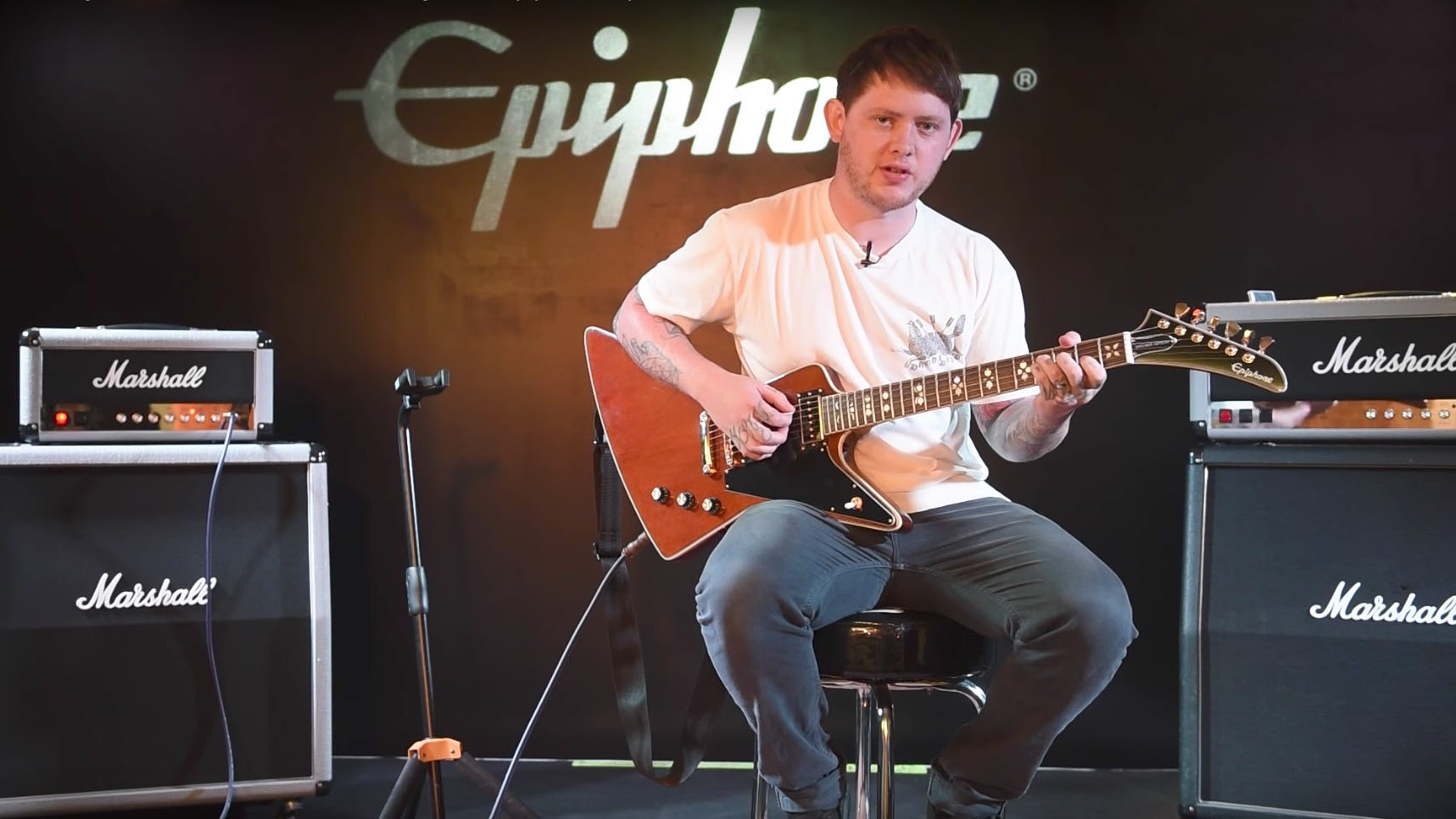Bring Me The Horizon's Lee Malia: “We realised that songs don’t have to have 100 parts, with every single sound you could make”
The BMTH guitarist on gear, weird Gibsons and the band's innovative approach to metal

Lee Malia explains how heavyweight guitars and classic Marshall amps put the bite in his tone, and why Bring Me The Horizon were never going to stay in their lane when there’s a whole world of possibility out there...
Bring Me The Horizon might have come storming out of Sheffield in the mid-2000s with an of-the-era deathcore sound that saw firebrand frontman Oli Sykes dispensing venom over guitarist Lee Malia’s tempestuous arrangements, but they soon learned that ruling the scene was no triumph when the scene was governed by rules.
After all, the most profound creative victories can only be won when they are pursued on your own terms. Having been rebuffed by metal’s gatekeepers, outgrowing their niche, BMTH’s appetite for iconoclasm showed them a different path.
You learn more. It’s aging. We grew up, but we were doing it through albums
In welcoming Skrillex, Canadian singer-songwriter Lights, and a choir onto 2010’s There Is A Hell And I Have Seen It..., BMTH’s evolution soon gathered steam. By 2013, keyboardist Jordan Fish had made his debut on Sempiternal bringing an electronic context to Malia’s riffs that offered new rhythmic and melodic possibilities. Those were explored further on That’s The Spirit (2015), on tracks such as Happy Song, calling to mind a more ethereal take on Faith No More’s Be Aggressive, and in concert, as BMTH took to the stage at the Albert Hall in the company of an orchestra.
This is the path that brought BMTH here; to a place where they can welcome Cradle Of Filth’s Dani Filth and beat-boxer Rahzel from the Roots onto their latest album, Amo, and for it to somehow all make perfect sense. Malia attributes much of it to growing up. Sure. But, c’mon, a band with the name Bring Me The Horizon were never going to stand still.
You were never universally accepted as a metal band. Was that ultimately liberating?
“I suppose we never got trapped in a scene. If we had been a legit metal band we still would be like an extreme metal band - but we never really were. We were just young kids who liked heavy stuff, and all these extreme metal bands; we tried to recreate it in our own way. But we were only 17, so we weren’t as up on it as we could have been.”
Want all the hottest music and gear news, reviews, deals, features and more, direct to your inbox? Sign up here.
Was your evolution conscious?
“Even when we were in the MySpace scene, and on the Warped Tour, and that whole metalcore scene, we knew for the next CD we didn’t want to do [the same thing again]. Even when we did There Is A Hell... we knew we wanted to go a bit more experimental. We have never been too attached to the scene that we are in. As we got older, we realised that songs don’t have to have 100 parts, with every single sound you could make. You learn more. It’s aging. We grew up, but we were doing it through albums.”
Catching Fish
This appetite for experimentation sounds like it was in your DNA from the beginning, but when Jordan came along, how did that change things?
“[The previous guitarists] never contributed that much before, so it was really just me and Oli. He can’t play guitar but he’ll sing a part. With Jordan, he can play guitar but he has a whole different approach and when you add it all together it becomes more interesting.”
You’ve spoken of Jordan cutting up your riffs and rearranging guitar parts. How has this changed you as a player?
I think we’ve been ahead of some of the other bands. To Oli’s credit, he’s quite good at that. He has ideas before anyone else
“It works because my brain thinks like, ‘How would I play that?’ whereas he’ll sit there and chop something up and I’ll figure it out, like, ‘Oh, that’s how I should play that!’ I am not approaching it like a guitar player; it’s just sounds, if you know what I mean.”
It’s like you take a guitar part, it’s then reimagined in a way a hip-hop producer might, then it goes back through you. That’s kind of crazy, but it’s those sort of ideas that accelerate your progression...
“I think we’ve been ahead of some of the other bands. To Oli’s credit, he’s quite good at that. He has ideas before anyone else; he’ll come up with something and you’ll think that sounds like it’s just going to be mental, like having a choir all chopped up on a CD, but then we did that and then everyone started having choirs on their CDs, the whole metalcore scene - but a year later than us. Do you know what I mean? Or having strings. Even though, of course, Metallica did it years before, we modernised it.
“I always think we have been a year ahead of bands who are kind of just seeing what’s cool and then copying it. I think we always thought ahead, and thought about what we were doing, rather than just doing the same thing again. We’ve always thought what we could do next to make it better.”
As you’re growing, your influences naturally broaden. Who has been exciting you lately?
“I mean, over the last like, god, 10 years, the biggest artist I’ve got into is Bon Iver. I got into him when his first CD came out and it was all acoustic, and everything he has put out since I’ve loved. He is interesting because his first CD is all acoustic and weird, rustic, and then his second is like a 12-piece band with saxophones and strings, and then the CD after that he’s pretty much gone all digital, and it’s all retro synths.
“With every CD, it’s like, ‘What is this guy gonna do next? But it always sounds like him. He has influenced me in being open-minded. It excites me when he brings a CD out and I know it’s going to be something different. It’s the same with everyone in our band. They are all into people like that, like Jordan is heavily into Radiohead, and they have changed their sound a bunch of times.”
Lee's gear
Lee Malia goes back to the future with a touring rig of old Marshalls and MIDI switching
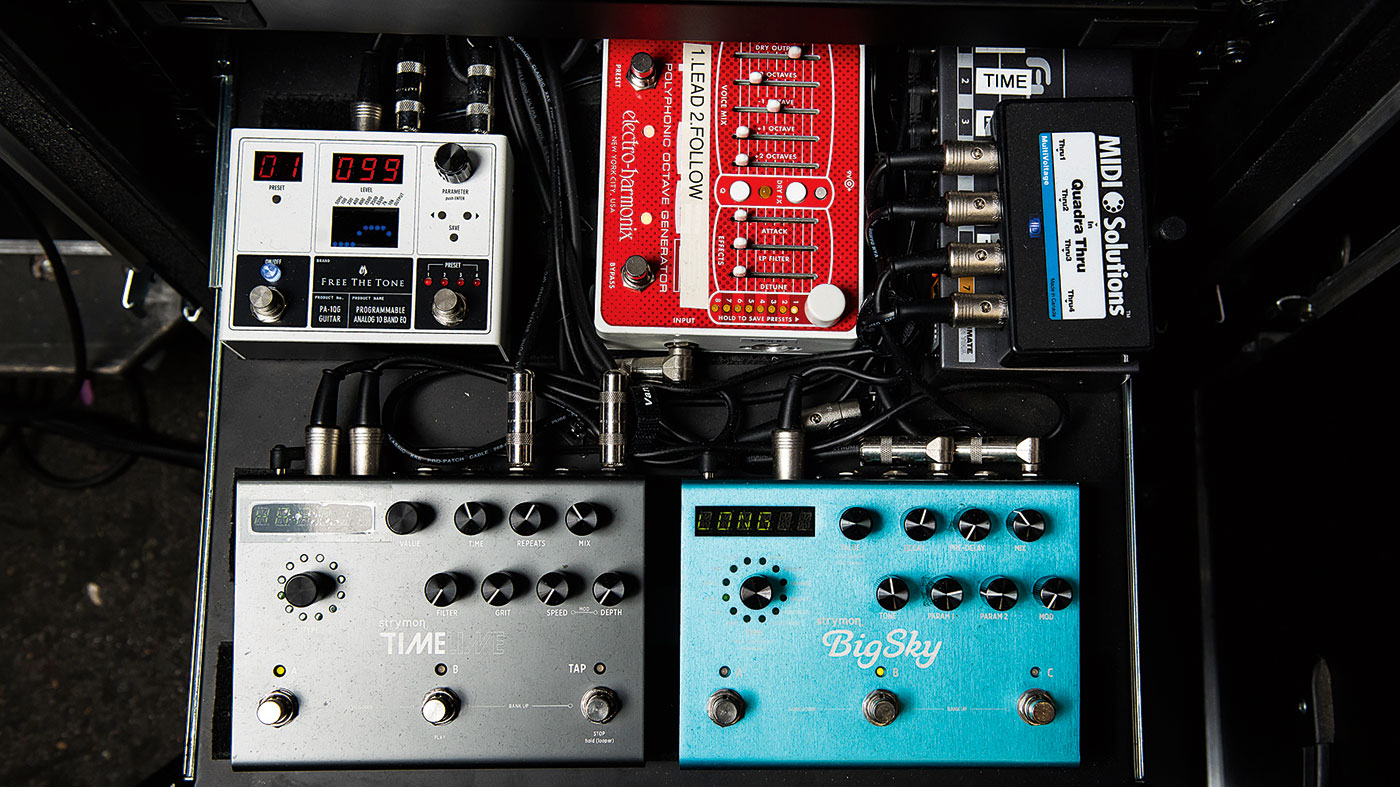
Marshall and Strymon
Marshall JCM800
“The JCM800 is full [gain]. The master volume is just above four. We found a sweet spot. That’s what I always listen for, finding that sweet spot. If you go too far it gets a bit too spongy and then you lose the sharpness of the attack, which is what I really like.”
Marshall JTM45 and Strymon Big Sky Reverb and Strymon Timeline Delay
“Cleans go to the JTM45, which will just be the JTM45 on its own. Then I’ve got two Strymons pedals that I use for all my delay and reverb, and they go in the front of the JTM45 amp because it hasn’t got an effects loop.”
Electro-Harmonix POG
“Actually, I recently had the Electro-Harmonix modded so it has a MIDI input. You can pre-program it so the MIDI switches it and then you don’t have to turn the knobs.”

Made By Mike Klon Centaur Clone
“I took it to the studio when we were recording and A/B’d it with a real Klon and it is that close. It sounds awesome.”
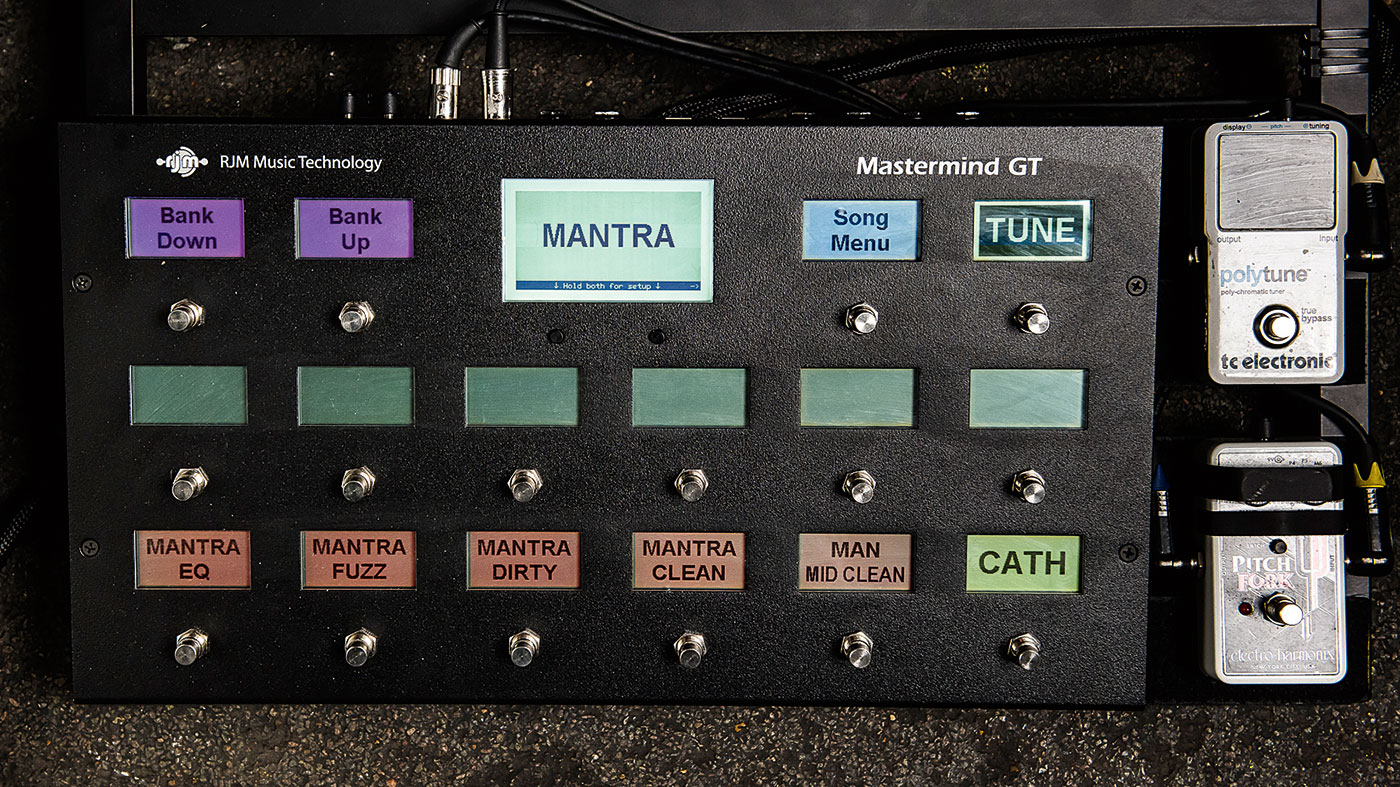
Radial JX44 Guitar MIDI Switcher and RJM GT/16 MIDI Floor Controller
“We’ve gone to rack-mounting all my pedals and a MIDI controller. It was getting a bit ridiculous because every album I am in the studio messing about with weirder and weirder sounds and then it just means I have to add more pedals to my pedalboard to make those sounds live.”
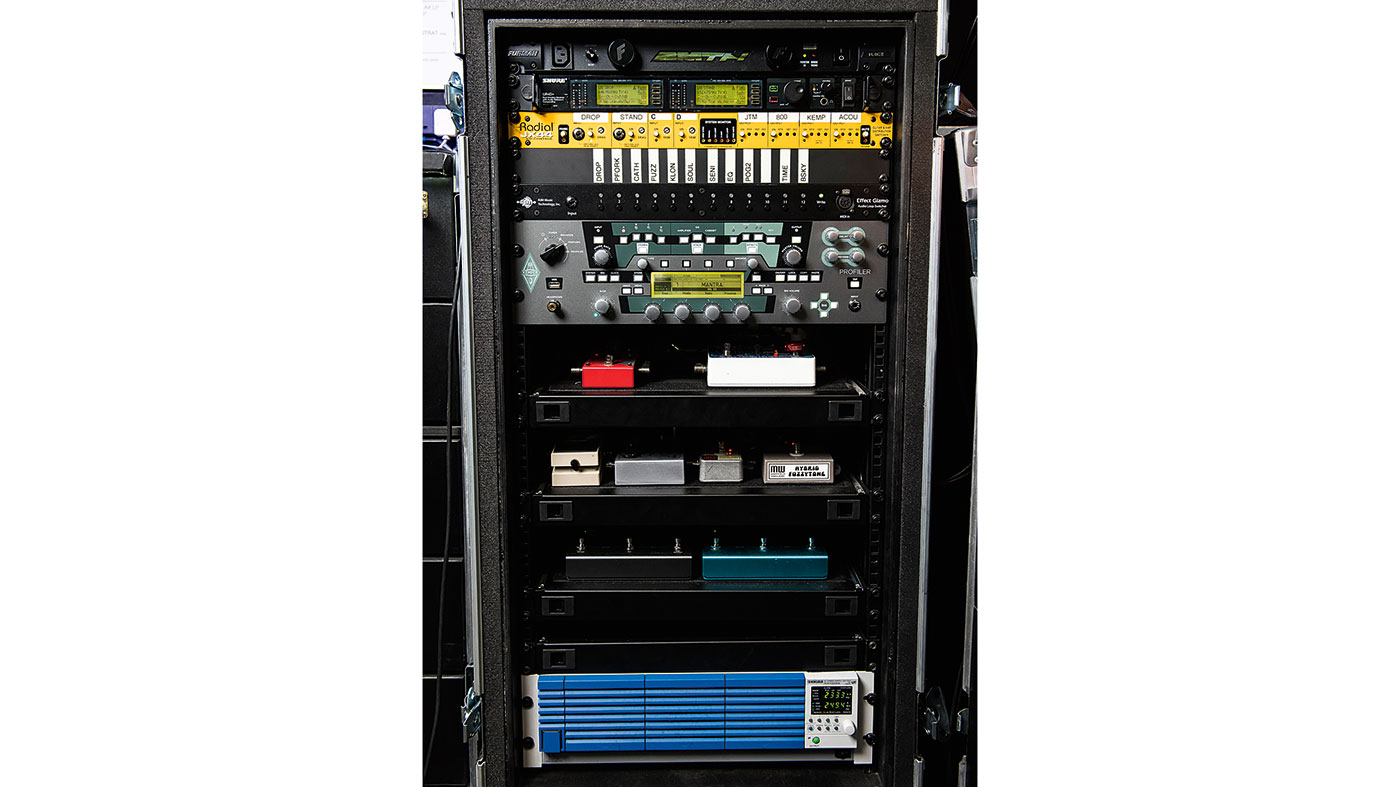
Kemper Profiling Amp
“We are basically using the Kemper as an extra effects channel in the rig. I have a spare JCM800 and the Kemper runs into the effects loop so it’s using the valves of the 800 as the power amp.”
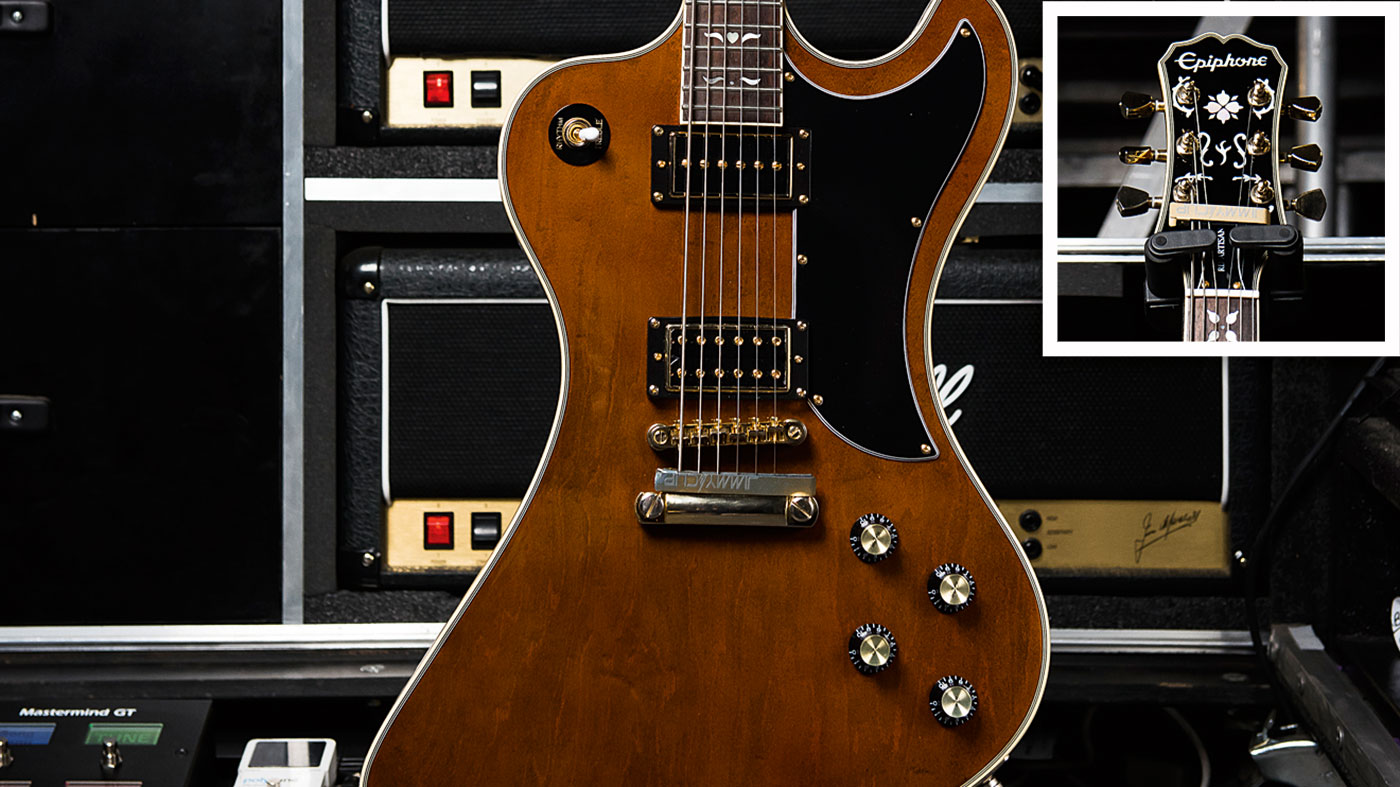
Epiphone Lee Malia RD Custom Artisan Outfit
“I’ve got one of each [signature guitar] so I’ll play them pretty much all the set in varied tunings. All we have done is put an .080 [bottom string] on so we’ve widened the nut so it sits a bit better, and then you’ve got to adjust the intonation because it’s such a different string than what’s usually there.
“I just really liked the Artisan shape and I noticed that a lot of bands that used them were doomier sounding - that’s always a sound I’ve quite liked in a guitar. I like how it’s got the Les Paul headstock. It’s just a nice-playing guitar. It sits really well.”
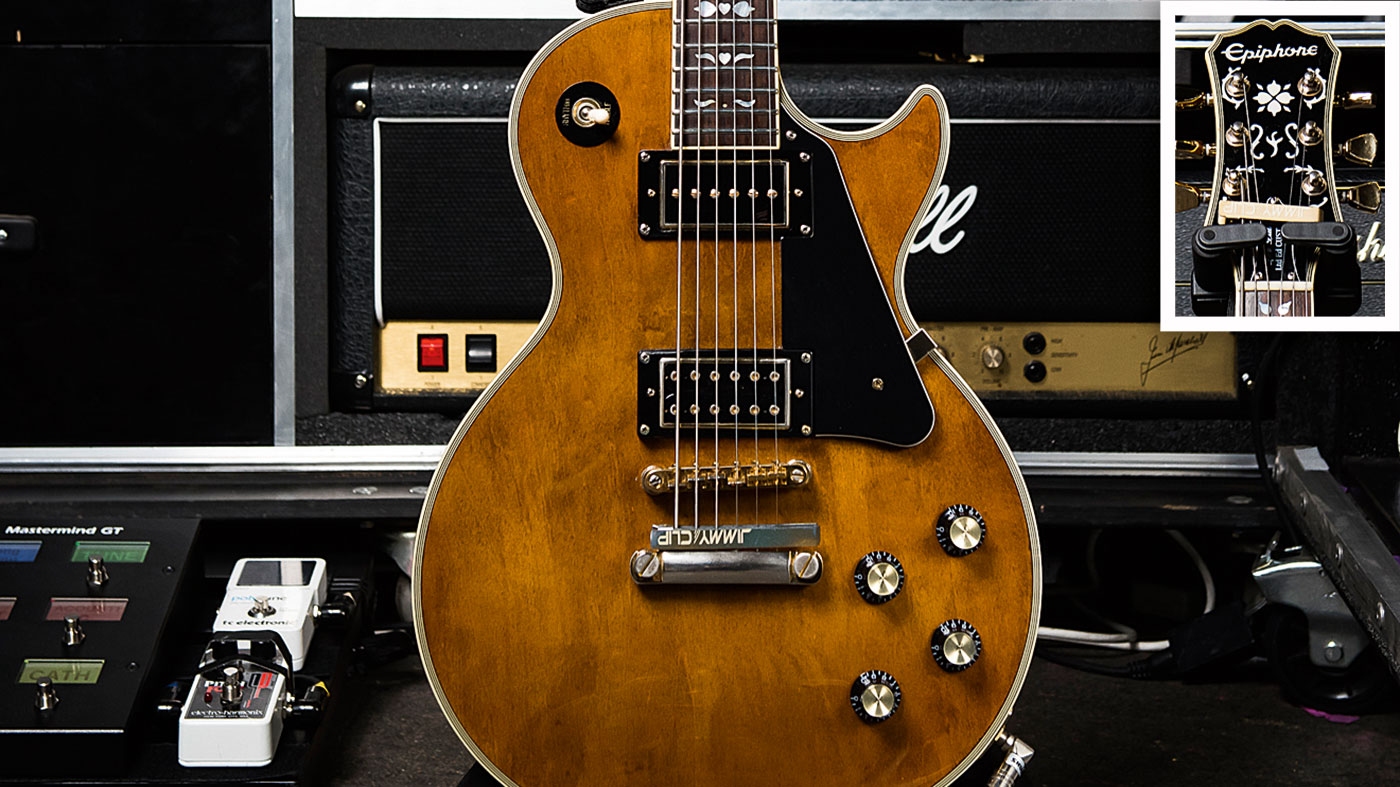
Epiphone Lee Malia Les Paul Custom Artisan Outfit
“The first ever prototype of my Les Paul had an even thicker neck. I said, ‘I want the thickest neck you can do.’ [Laughs] We went back and forth, and scaled it down a little bit because it might have been too much. They’ve obviously got to think about selling it.”
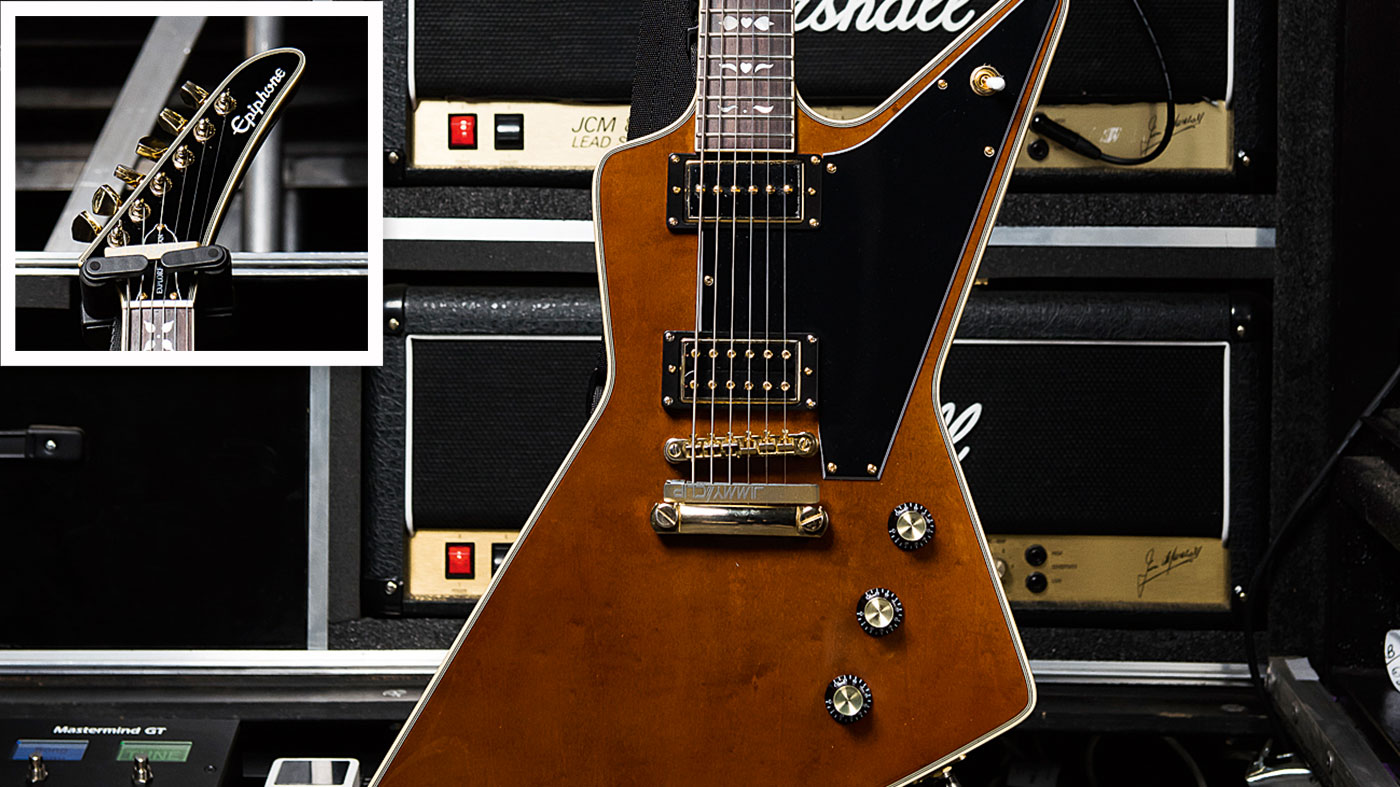
Epiphone Lee Malia Explorer Custom Artisan Outfit
“That [finish] comes from the old Gibson Les Paul Artisan. I actually have an old ’76 at home and I just love how that guitar looks. Whenever I am in a guitar shop I am instantly drawn to the natural finish guitars, the dark mahogany.”
Soundtracks
Jonny Greenwood has done some of his most interesting work scoring films. Is that something you’d want to do?
“I’ve already scored a film! It’s a horror film called Pyewacket. It’s about a witch, and that’s the old witch’s name. It’s by a Canadian producer. On our There Is A Hell... CD there is an instrumental track, which was really soft and atmospheric, and he used that on one of his films.
“We got talking to him and he was like, ‘Well what do you think about doing my next film?’ So I did all this score for him. That’s a lot of atmospherics. There are no guitars or anything. It’s all just weird stuff. But I really enjoy it because I love watching horror films.”
Being confident enough to not be like, ‘Oh, I’m not playing on this bit? Why am I not playing? Am I not important?’
What did you learn from the experience?
“It’s a good thing to have on my side; when we are doing a CD, I can feel if a section really needs guitars or not.”
That you don’t have to play over everything?
“Yeah. It’s a confidence thing as well, being confident enough to not be like, ‘Oh, I’m not playing on this bit? Why am I not playing? Am I not important?’ You know when it needs it or not. And when we write, you could be putting in a hundred ideas on something on another instrument, but the last thing it needs is a guitar.”
Speaking of which, your tastes in gear are very 1970s. What attracted you to the Gibson RD?
“I’ve always liked them. I’ve got a bunch of weird, one-off shapes that Gibson did, like the Marauder and the S-1. I’ve always liked those weird things they did when they were trying to challenge Fender. The Marauder is kind of like a Telecaster but it has got a Flying V neck; it has a noiseless single coil and a humbucker, but they did that before Fender... I find that quite cool. So I got really into looking at weird Gibsons! Then I saw the RD and loved it.”

Hard to play
All your signature Epiphones have thick necks. Did it affect your own playing style?
“I used to play Ibanez back in the day and they had really thin and flat necks. It was more when we started playing riffy stuff that I got more into a thicker neck. It suited the style I was writing in. I just really like how it feels.”
And it’s got to be heavy, right?
Everyone who tries my amp says, ‘Oh you haven’t got much gain.’ But it sounds gainy
“Because I play quite hard, and the heavier the guitar, the harder I play. It sounds better to me because it is getting more out of that .080 gauge [bottom] string. When we did the Les Paul I was adamant I didn’t want any weight relief in it because I don’t know whether it affects the sound or not but I feel like it does. If I get a really light Les Paul, to me, it sounds more rounded, and I like a direct, attacking sound.
“That’s why I use the Marshalls; they are so direct and you can’t hide behind anything. Everyone who tries my amp says, ‘Oh you haven’t got much gain.’ But it sounds gainy. It’s only when you play it you realise that it is actually quite hard to play because you’ve got to [get that response].”
It’s such a question of feel. Whether we like a guitar or not is sometimes all about feel.
“It’s so weird. When I first got the production models through you could pick up two and they are totally different weights. And I’d email them: ‘Have you weight-relieved these!?’ It was just the difference in the wood. Me and my tech [Joey Black] always weigh them out and I pick the heaviest ones to take on tour with me. But the difference in weight in some of them is crazy; it’s like a couple of pounds.”
You’ve got the humbucker-sized P-90, the P-94, mounted in the neck position on all your Epiphone signature guitars. How does it perform with the low tunings?
“Good. I mainly use the neck for cleans and a lot of the time my clean is in the middle [position] so it’s a bit of the neck and a bit of the humbucker. But it’s because I had a guitar built years ago, and it had a humbucker and a single coil in the neck and I really liked how the single coil sounded. When I do the cleans, I use my fingers to pick the chord shapes and I prefer the response.
“On the new record, there are some sections where we made the guitar sound like a bass, and when you use that P-90 with the really thick strings you almost get a bass sound. There’s a bit more body in a P-90 than a [regular] single coil, which I like, but when you have it in the middle position you get a little bit more attack from the humbucker and it just really works with the way I play.”
Take a look at bands like The Beatles, and Queen, and Fleetwood Mac; they reinvented themselves many times
We’ve talked about how you are always looking to the future with your sound, but your tastes in gear are vintage, you’ve got a Journey tattoo, and you’ve spoken often of your love of Gary Moore. What is it about classic rock that appeals to you so much?
“I think it all just comes from when I was growing up, listening to those bands because my dad is just a huge classic rock head. Whenever we would go on drives - before mobiles existed - he’d always put CDs on: ‘Listen to this. You’ll like it!’ And from that starting point I just got into all these classic rock bands.
“When I was younger I didn’t know who half of them were but I used to stick ’em on my wall ’cos I used to like what they looked like as vinyl, like Steely Dan and Wishbone Ash album covers on my wall. But I had no clue what they sounded like.”
That was an era defined by experimentation and the urge to do something different. Look at Fleetwood Mac - they could have been four different bands...
“Back when they were making those albums, like, if you listen to The Beatles, each album they sound like a different band; if you think of the first CD and then Sgt Pepper’s... it’s pretty crazy. On one CD they’ll have some absolutely incredible songs and then they’ll have a song like Yellow Submarine.
“If you take a look at bands like The Beatles, and Queen, and, like you said, Fleetwood Mac; they reinvented themselves many times, and I think, with us, I’m not saying that we are anything like those bands, but we are not doing anything that is drastically different to what they were doing.”
Jonathan Horsley has been writing about guitars and guitar culture since 2005, playing them since 1990, and regularly contributes to MusicRadar, Total Guitar and Guitar World. He uses Jazz III nylon picks, 10s during the week, 9s at the weekend, and shamefully still struggles with rhythm figure one of Van Halen’s Panama.
